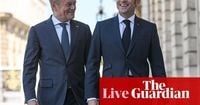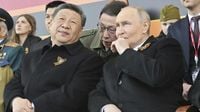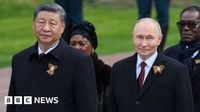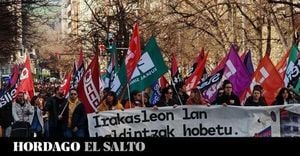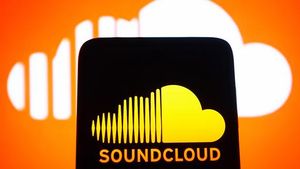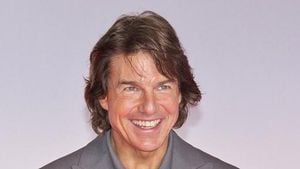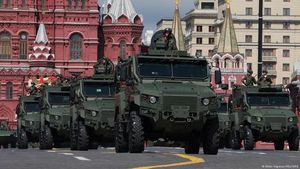On May 9, 2025, Russia held a grand parade in Moscow, celebrating the 80th anniversary of the victory in the Great Patriotic War against Nazi Germany. The event was marked by a large military display and the presence of numerous international leaders, including Chinese President Xi Jinping and Brazilian President Luiz Inácio Lula da Silva, amidst heightened security due to recent tensions with Ukraine.
The parade, a significant occasion in Russia's calendar, featured over 11,000 soldiers from various branches of the military, alongside armored vehicles and modern drones for the first time, emphasizing the ongoing war in Ukraine. Russian Defense Minister Andrei Belousov reviewed the troops as they marched across Red Square, showcasing the military's strength and resolve.
Vladimir Putin, addressing the assembled crowd, linked the lessons of World War II to the current conflict, asserting that Russia remains a bulwark against what he termed Nazism and Russophobia. He declared, "Truth and justice are on our side," reinforcing the narrative that the ongoing military operations in Ukraine are a continuation of the fight against fascism.
Putin's speech highlighted the importance of international alliances, with Xi Jinping prominently featured as a show of solidarity between Russia and China. The two leaders exchanged pleasantries, with Putin thanking Xi for China’s historical contributions during World War II. This display of unity was further underscored by the attendance of various other leaders from countries traditionally aligned with Russia, including Venezuela and Serbia.
However, the celebrations were overshadowed by ongoing hostilities in Ukraine. Just hours before the parade, Ukrainian drone strikes disrupted air travel in Moscow, leading to the temporary closure of all airports. This incident underscored the precarious situation in which the celebrations were occurring, with Kyiv accusing Russia of continuing its aggressive operations despite a unilateral ceasefire announced to coincide with the event.
Ukraine dismissed the ceasefire as a mere facade, claiming that Russian forces had launched thousands of attacks since its inception, a claim that Russia countered by accusing Ukraine of violating the truce. The situation remains tense, with both sides trading accusations of aggression and violations.
In a striking display of military might, the parade featured a variety of modern weaponry, including tanks, missile systems, and drones, marking a departure from the scaled-back celebrations of previous years. Notably, the presence of combat drones, including the Russian version of the Iranian-designed Shahed, reflects the evolving nature of warfare in the region and the role of technology in modern conflicts.
As Putin continued to rally support for his military operations, he emphasized the sacrifices made by Russian soldiers, including those who have fought in Ukraine. This narrative serves to bolster domestic support for the ongoing conflict, framing it as a patriotic duty to protect the nation against perceived threats.
Despite the grand spectacle in Moscow, the international response has been overwhelmingly critical. Many Western leaders and diplomats chose to demonstrate their solidarity with Ukraine by attending a parallel meeting in Lviv, where they pledged further support for Ukraine's defense efforts. The EU's foreign policy chief, Kaja Kallas, reiterated the bloc's commitment to aiding Ukraine, emphasizing the need for accountability for Russian actions during the ongoing conflict.
In contrast to the celebrations in Moscow, the mood in Lviv was somber yet resolute, as European leaders gathered to discuss the establishment of a special tribunal to investigate war crimes committed during the conflict. This meeting highlighted the stark divide between Russia's portrayal of its military actions and the international community's view of those same actions as violations of sovereignty and international law.
As the day unfolded, the juxtaposition of the celebratory atmosphere in Moscow against the backdrop of ongoing violence and international condemnation painted a complex picture of the current geopolitical landscape. The Victory Day parade, while a moment of national pride for Russia, also served to highlight the deepening rift between Moscow and the West, as well as the escalating conflict in Ukraine.
In the days following the parade, the focus will likely shift back to the battlefield, where both sides continue to engage in hostilities. The ongoing war has not only reshaped the military landscape but has also significantly impacted international relations, with nations reassessing their alliances and positions in light of the conflict.
As the world watches, the implications of the events of May 9, 2025, will resonate far beyond the parades and speeches, influencing the course of the conflict and the future of international diplomacy in an increasingly polarized environment.
